
A team from J. Walter Thompson Asia-Pacific is attending SXSW in Austin, Texas, this week and publishing its findings on a Tumblr. We'll be re-publishing some of those posts here.
Contributors below:
- Kieran Antill, executive creative director, Melbourne
- Josie Brown, APAC head of digital
- Tomoki Hamamoto, communication design director, Japan
- Alan Leong, digital creative director, Singapore
- Gavin Lum, director of digital, Shanghai
- Jay Morgan, group digital creative director, Sydney
- Hansa Wongsiripitack, Southeast Asia head of digital
The undercurrents that link technology and society’s future
Jay Morgan

One of the things you pick up on fairly quickly at SX Interactive are the undercurrents. Even though there are over 1,000 different talks sessions throughout the week common themes start to emerge. A universal thought if you will that connects all the speakers and the delegates.
While last year’s trends highlighted the commoditization of artificial intelligence (AI) it was merely an introduction. This year almost every track from every sector is discussing the effect AI will have on the world.
Health, automotive, transportation, education and government are all talking about the impact of AI. The commentary on these talks is running the gauntlet.
One end is heralding the golden age of automation and the benefits to humanity, while the other has been expounding cautionary warnings about the need for oversight and governance of this new technology. Seems like a common history on the uptake of many new technologies; when we sense the immense power of a new technology we are both giddy with the possibilities and terrified at the same time.
Politics, with little surprise, is getting a lot of play this year. What has been really interesting however is the shift in narrative. Cory Booker, US senator from New Jersey, gave an impassioned opening speech to the festival, declaring we need to move from a dialogue of tolerance to love.
This was echoed by multiple speakers including Van Jones, CNN commentator and the host of The Messy Truth. Van’s message is one of inclusion too, as he seeks to bring people into a progressive conversation through his #LoveArmy initiative.
As I consider both these salient themes, I can’t help but think they are intrinsically tied together.
There are parallels between them that I think are important to the state of flux we find ourselves in right now.
With AI we have strong proponents at each end of the conversation. The pioneers are championing the virtues of an AI-driven world, where we should embrace the amazing value it can offer to our lives. Google with Tensor Flow and API.ai, Microsoft and Facebook are all huge champions of the technology and encourage uptake. However, they demonstrate very little restraint.
While on the other end we see this cautionary voice from the likes of Elon Musk, Bill Gates and Stephen Hawkins, warning of the potential for detrimental impact.
Just like in the global political debate, the AI argument displays parallels for the left and right.
What emerges this year are the new proponents that are advocating to bring the conversation to the centre.
It’s clear that our world is divided, possibly now more than ever. And in a world where we have never had so much information, it’s odd that we have so much trouble coming to the middle and developing a new dialogue.
Throughout SXSW I have been buoyed by the new voice of reason that is transcending the conversations across all topics.
It seems to me that this has been the critical missing element across the convergence of technology and society.
While much of the past 12 months since the last SXSW has been marred by uncertainty and uneasiness, this new voice promises to shine a light in the direction we should go.
If SXSW continues to be the canary down the mine it has been for over 30 years, then this unifying voice we are finding could make for a positive year ahead. And that encourages me tremendously.
The next digital divide
Tomoki Hamamoto
Last year’s SXSW was all about VR. This year, AI and machine learning dominate the agenda.
AI is already driving innovation in two key areas. The first one is the voice assistant, which will drastically change people’s behavior and our communication structure in the near future. When we talk about utilization of AI right now, we think of chatbots. But this situation will change through the evolution of voice assistants.
In the era of personal computing, the UI was the keyboard and the mouse. And with the arrival of the smartphone era, it changed to touch screen. So what about the UI in the IoT device era? Definitely it will be a voice assistant.
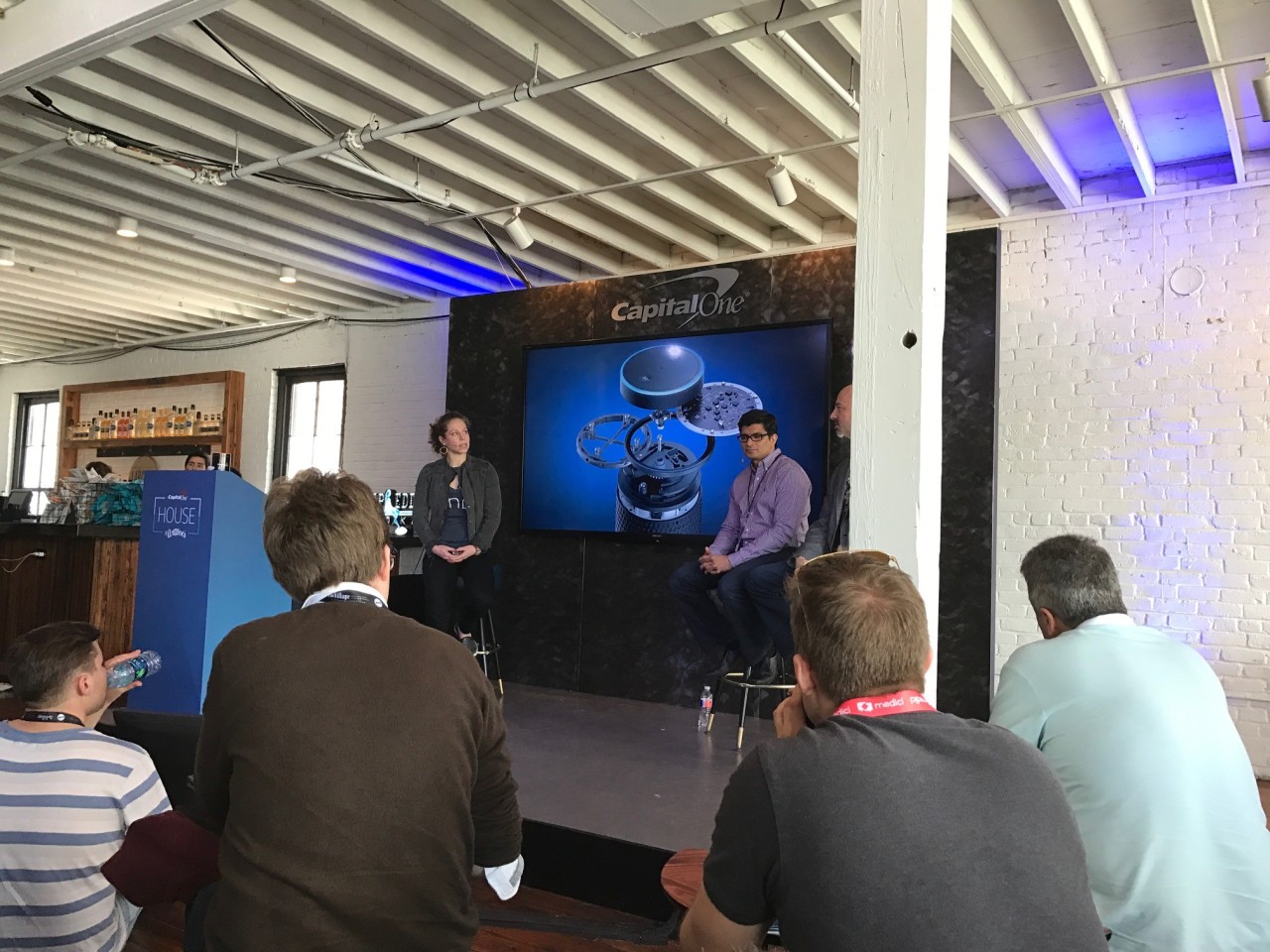
The competition for dominance in voice recognition technology by major platform companies has already begun. This type of AI has the power to drastically change people’s behavior and our fundamental communication structure for current digital marketing. Already, people are not typing anything into Google to search—they’re asking for that search verbally.
And the second is IoT based AI technology, which has a strong potential to create a new leader in the digital market. According to a CES 2017 report, about 700 devices with Amazon Alexa from various manufacturers were announced. This means Alexa showed an obvious advantage to competitors as IoT’s operating system.
The name “Alexa” is on everyone’s lips at SXSW. But there is a possibility that the digital market leader will change from Google to Amazon in the IoT era. As long as the accuracy of AI grows in proportion to the number of users, and the fact that many brands are choosing Alexa as the OS for their IoT devices means Amazon has a short-term advantage at this time. But the playing field is dynamic.
I feel that the next digital divide is just around the corner. The smartphone era brought about great confusion to creatives and marketers that grew up in the mass media era; the same phenomenon is going to happen again. SXSW offers us important roadmap of what’s around the corner – and it looks like an exciting ride.
SXSW: The crossroads of curiosity and fear
Kieran Antill
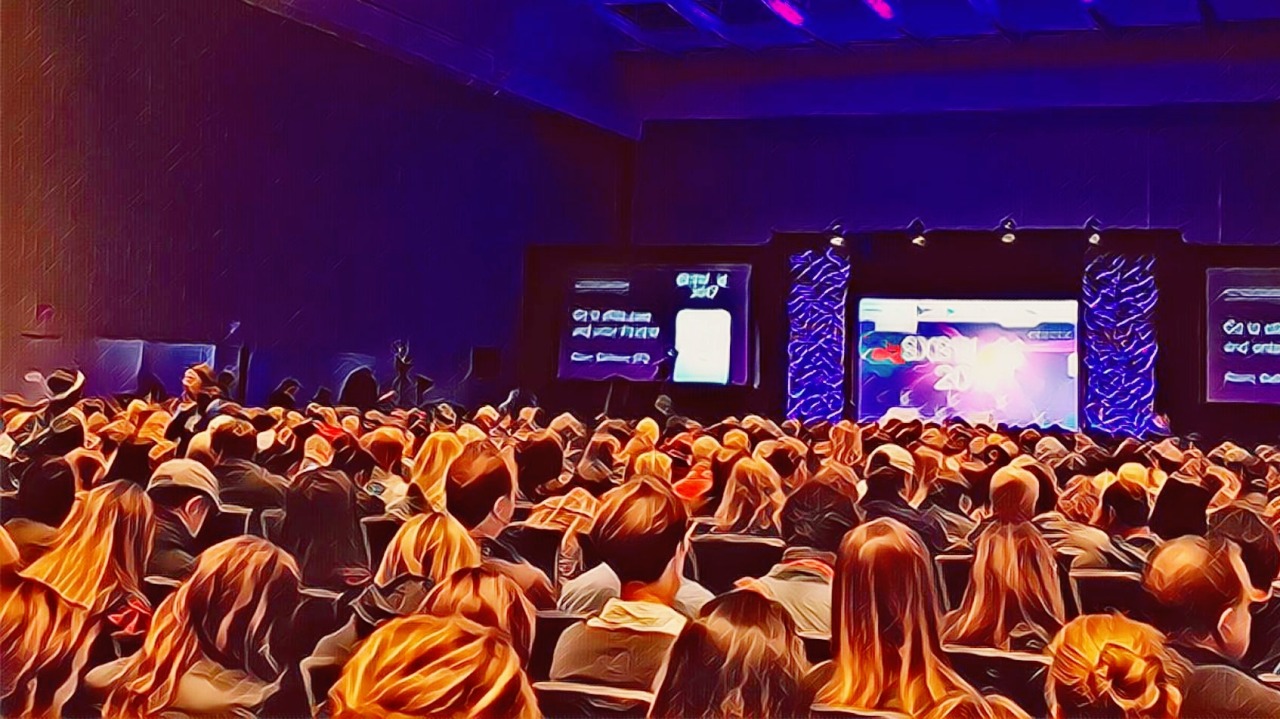
The growth of SXSW attendance is so expansive that it changes the commercial flight schedule into Texas during March, and anyone who is a veteran attendee will tell you that year on year the lines waiting outside each talk grow longer, with many talks at capacity.
So what do all these people have in common? Why have they come? Why am I here?
While the festival does skew very liberal and over-index in tech, it remains, all in all, one of the most diverse crowds you will find at a single conference. It is a collision of industries, which results in some of the most eclectic characters and topics. But to venture a guess at what all these people have in common I would say that it is a combination of ‘curiosity and fear’.
The ‘curiosity’ part is probably easy to agree with—SXSW is full of big questions and unconnected answers in diverse industries from marketing, music, sports, tech, weaponry and more. And yes, I said weaponry—not the gaming type either.
To give example over the last few days I have sat though talks from ‘A/B testing methods used by Netflix to the future of warfare with the US Office Of The Secretary Of Defense, from designing infrastructure for autonomous cars to designing emotionally intelligent bots and from not-for-profit socially minded enterprises to empowering a billion women by 2020.
I think the ‘fear’ comes from asking so many curious questions and It’s more than just business FOMO—it’s the moral implications of gene manipulation, brand monopolies of future data, the race for venture capital and more. However, this 'fear’ is a healthy reaction to a world that is moving so fast.
It’s even difficult for any speaker to talk in absolutes aware that they are so often talking about the blurry edge—the frontier of technology and of human behaviour. No one person or company stands on stable ground here with even some of the biggest companies only able to place bets on the future. Google talks of ‘moon shots’ investing in many long bets from balloon internet to self driving vehicles, IBM continues to lead with ‘Watson’, which remains brilliant but ill-defined, while Facebook iterates and acquires trending platforms. Even the US Office Of The Secretary Of Defense, which brags about having $70 billion in R&D funds, admitted that its focus in on tomorrow, knowing that the longer future is anyone’s guess.
To augment a quote from the late Alan Fletcher (The art of looking sideways) 'The more you know, the more you know you don’t know…and SXSW is an experience that will make you feel powerfully small.’
So if you are someone that has all the answers, then you’ll probably not find much at SXSW but if you, like myself and many others find questions more exciting than awards, then book your tickets for SXSW 2018 now.
SXSW Accelerator Pitch offers preview of hot emerging tech
Josie Brown

The winners of SXSW Accelerator Pitch sessions have just been announced, offering a glimpse at some of the most promising new tech from some of the most nimble startups from around the world, across a range of categories from fintech to health and wearables, and sports tech to social and culture.
It has been incredible to watch these startups deliver some impressive pitches to a roster of highly esteemed judges over the last two days—the questions and observations were as interesting as the pitches themselves.
Here are five startups, from the 12 winners announced at SXSW, that really piqued my interest as a digital marketer:
1. Lily: Winner in the Social and Culture category. Helps women select and buy clothes by understanding their emotions and perceptions about their bodies. US only at this stage. A really interesting retail application—could be an interesting partner to large clothing retailers.
2. Sound Scouts: Winner in the Health and Wearable Technology category. An Australian company—looking to go global—which uses a mobile game as a hearing test for children. It’s inspiring to see games as a vehicle to engage on health topics and diagnosis.
3. Brizi: Winner in the Sports Technologies category. Really fun social content. Brizi installs augmented-reality robotic cameras that can be operated by fans to instantly snap photos of themselves at sporting events. Recently used at the Australian Open. A great way to make group events more socially sharable—interesting for both event hosts and sponsors.
4. Thimble.IO: Winner in the Innovative World Technologies category. A US-based subscription service for a monthly electronics kit. You learn to make things (wifi robot, weather station, quadcopter, etc.) and every month get a new kit to advance your skills.
5. Unify.ID: Winner in the security and payment tech category. Scrapping passwords by coming up with other, more natural ways to uniquely identify people. Machine learning and sensor data makes for a great user experience whilst keeping ID secure. At last, we’re close to a future with no more password changes!
How Do I Look?! Women in the workplace x innovative products
Hansa Wongsiripitack
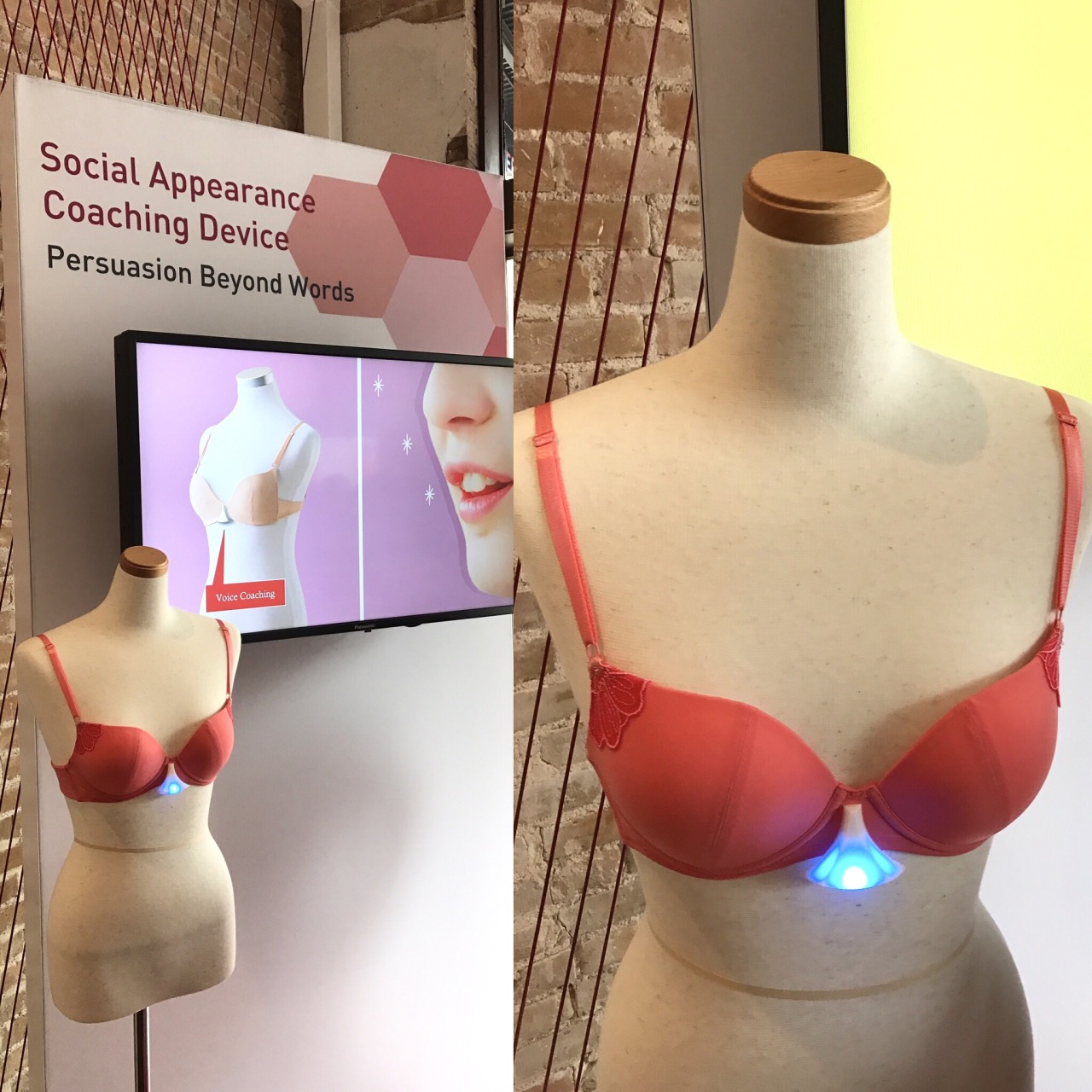
Innovation and technology plays a big role to in making our lives better. At SXSW this year, there’s a raft of innovative prototypes on show that target a key demographic: working women.
Today I visited Panasonic House @ SXSW, where they showcased a series of new products inspired by Panasonic’s young intrapreneurs under the company’s “Game Changer - Catapult” accelerator program.
Their Social Appearance Coaching Device caught my eye. This has been developed to help train ‘social wellness’ to working women in order to make them be comfortable and confident in every situation. The device monitors verbal / non-verbal language so you can get a better understanding of your personality type and develop your communication skills. Then, you set a goal via a mobile app and get real-time feedback during the day, with prompts to work on weak points and updates on the progress you have made toward your personal goals.

First-time SXSW participant Shiseido, meanwhile, has introduced Telebeauty, a supportive tool that would be very helpful for the mothers working from home. This real-time make up simulation app will link with Skype and allows women to ‘do’ makeup for a sudden online meeting with just one click.
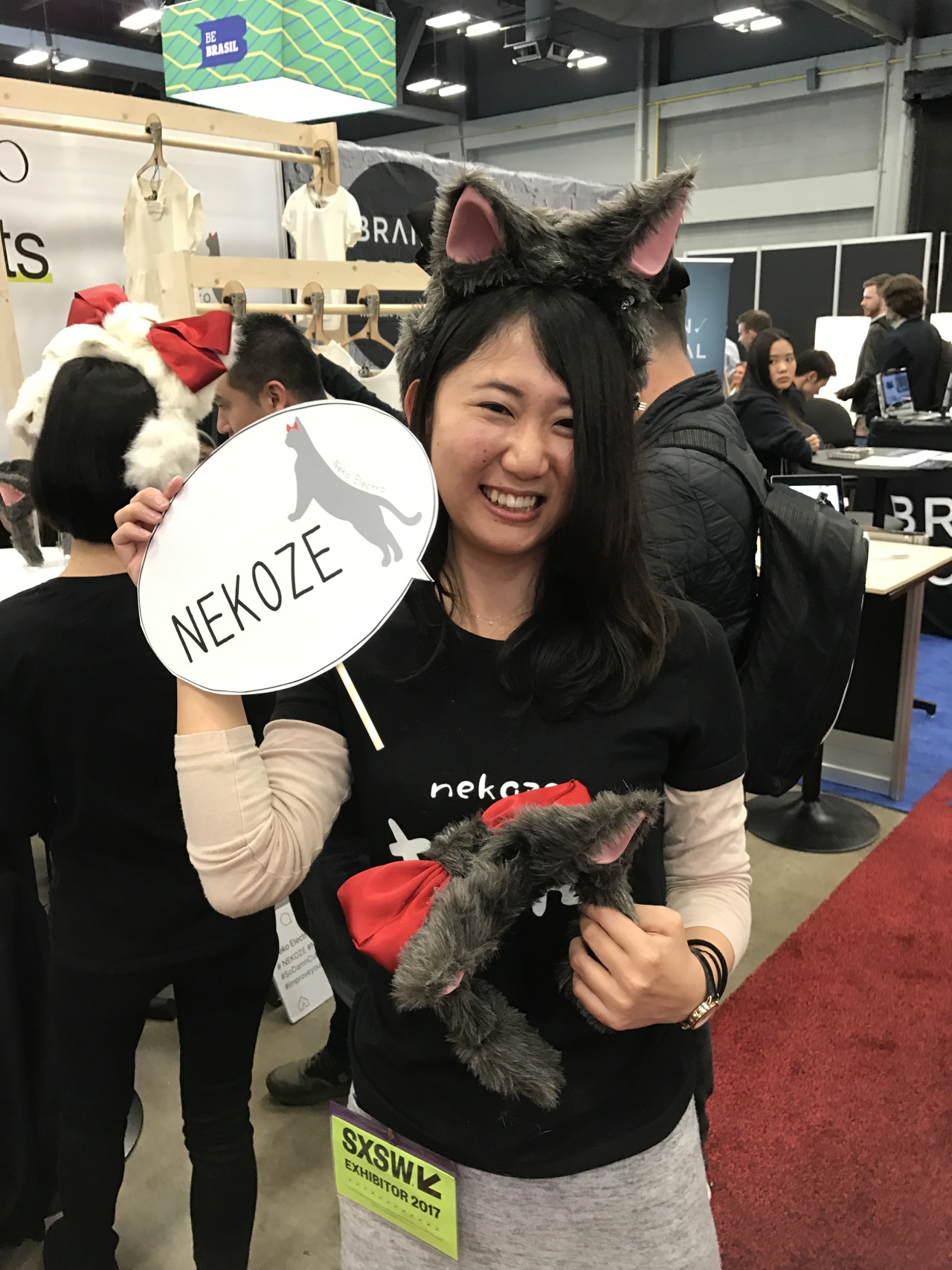
Further down the trade show floor, I came across Neko Electro, a furry bow headband with sensor and vibration that can help correct your posture for better health and appearance. When you are in the wrong posture, the ears will tip down and vibrate then will tip up when you adjust to the good posture. This project is under Todai to Texas (TTT) program run by The University of Tokyo as SXSW product showcase’s accelerator program.
It might not be something I’d run out and buy, in its current ‘Kawaii’ form, but if they come out with a more sophisticated headband version, it might be useful reminder for working women who find themselves slouched over the keyboard all day as to watch their back!
I’m excited to see more innovative products created for diverse target groups; what’s more, I’m super happy to see more & more women her at south-by on trade show floor. We need more girl power in tech, and it’s great to see a wide range of women participating in innovation and technology industry.
How to unlock a creative culture to drive innovation
Gavin Lum
The primary responsibility of creation has traditionally fallen on the shoulders of the Creative Team, and they ultimately live and die by the work that they create. Other functions typically played a supporting role and usually focused on clearing the runway (account people), pointing out where the runway is (strategy) or helping them build the plane (production).
This is highly stressful for most creative teams; a creative director friend of mine once confessed that creative reviews made him feel like walking into a crowded room and exposing himself for criticism/approval.
It’s time we share the responsibility because A) talent is impossible to find now (consider the elusive unicorn of a digital creative director) and B) I believe creativity can and should be taught—and we better start doing it now before it gets too late.
Rather than relegating all forms of creativity to just the creative team, how can we encourage the other departments to come together and work together to create and ideate together?
In a powerful session at SXSW, “The Creative Difference: Teaching Innovation”, four pioneers in education across diverse industries came together to discuss the compelling need to groom generations of problem solvers and innovators.
The biggest takeaway is that human behaviours are shaped by the environment, and the key to unlocking a creative culture is to create the right conditions that encourage and breed creativity for anyone and everyone.
It is about changing the way we define success and failure and creating safe spaces for creativity because the road to creativity is peppered with failure.
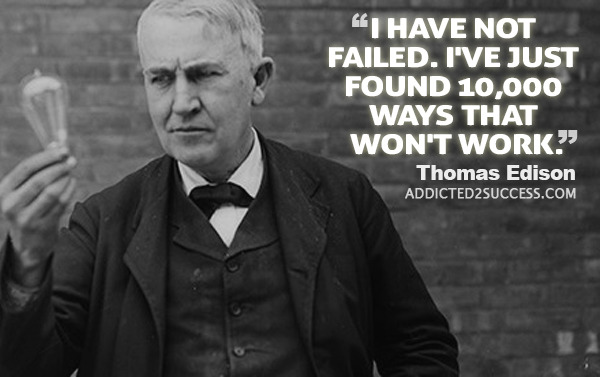
By repositioning failure as an opportunity to learn, we make the process of ideation as fun as possible and acknowledge failure as a part of the process.
This requires implementing a new system of reward and recognition (through all forms) to provide the motivation.
Next we need to create the physical spaces that allow for creativity to flow, be it seating arrangements, the furniture, walls, meeting rooms. We need to create sand boxes for people to play in, essentially safe spaces that allow people to explore.
Some of the most creative companies out there are already actively pursuing these measures in order to elevate their creativity internally, and also attract more talent that enjoy being creative.
In another SXSW session, “Creating Space for Making in the Workplace”, Alexandra (Airbnb), Ryan (Nike BRS Academy) Tim (Pinterest) and Patrick (IBM Design) shared their successes behind creating maker spaces within their companies, successfully breeding and fostering a creative mindset.
Each of them shared insights behind the creation of their respective maker spaces.

Airbnb has Common Studio

Nike has Blue Ribbon Studio
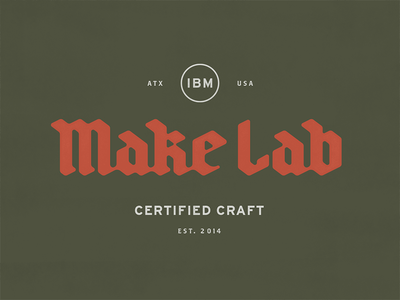
IBM has its Make Lab
These are essentially just spaces that allow people to get away from their computers and just go and make something. These spaces give tools to everyone that allow them to see an immediate impact on their work.
And really engages all of us to start rethinking our own contributions to the creative process and encourage even those that do not have ‘creative’ in their title to think, design and make something.
Conversations with a tomato
Alan Leong
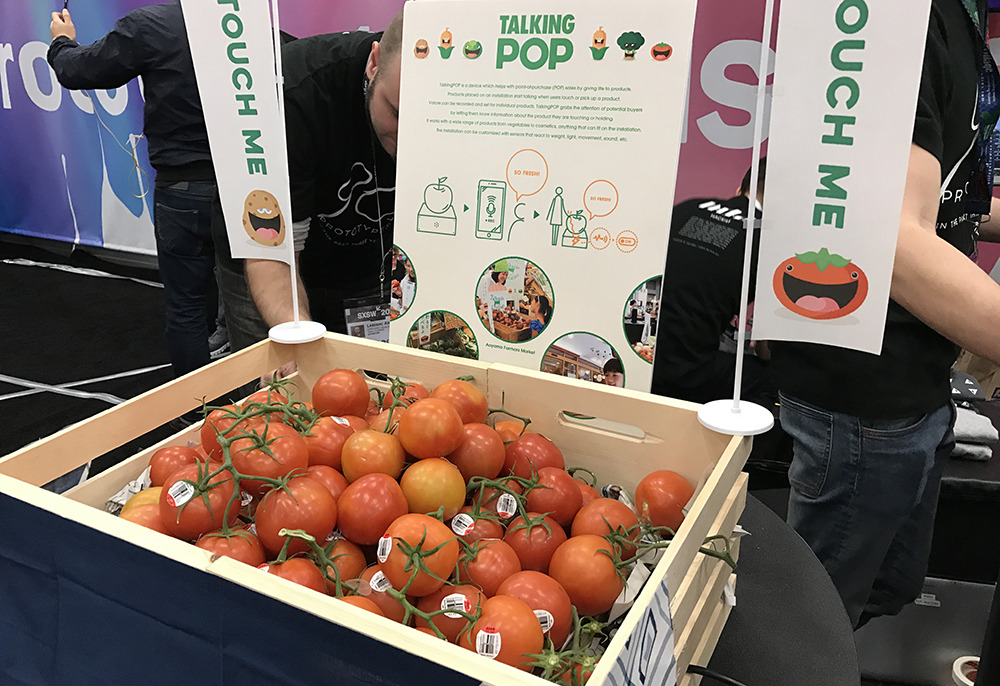
So I had a great chat with a tomato today at SXSW.
HACKist, a company from Japan, is demo-ing an incredibly interesting device sensor called TalkingPOP at the festival. What’s so fascinating about this sensor is that it allows different products to have an actual conversation with the consumer with just a simple touch. The installation can be customized with sensors that react to weight, light, movement or sound.
The current voice interactions are pre-recorded. However, with data and AI, the experience will be more immersive.
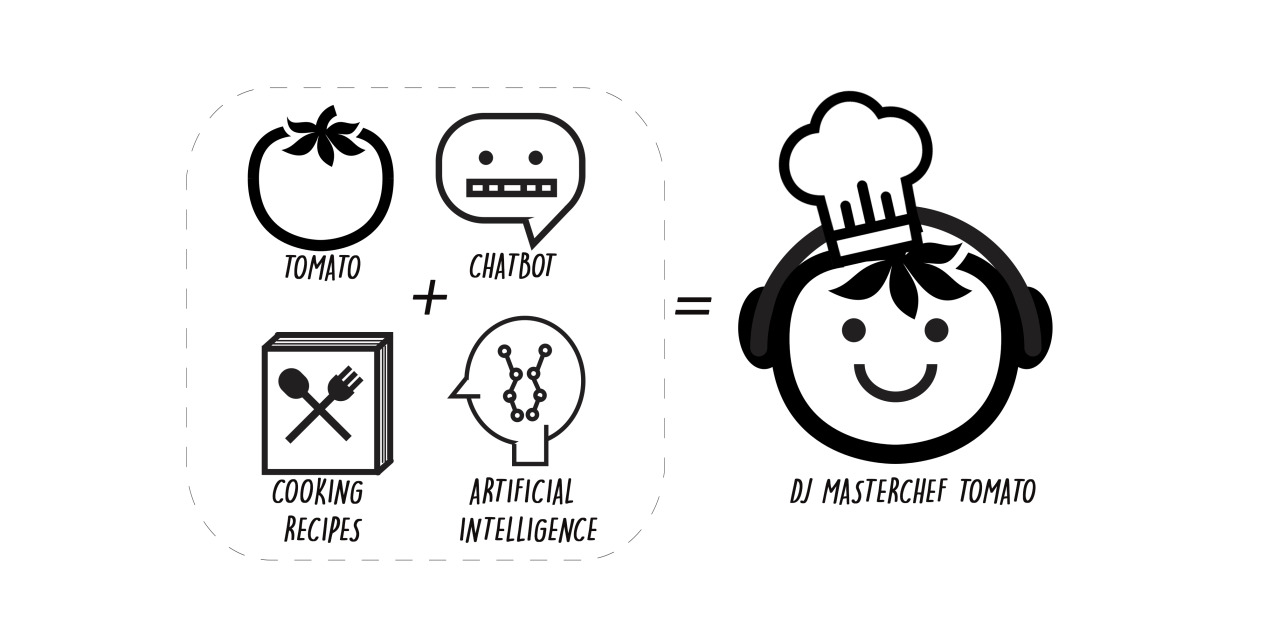
With device sensors such as TalkingPOP, an unassuming tomato will soon be integrated with chatbots that can tell you its date of expiry or even recommend a recipe based on weather data. Who knows, it might also be able to use facial and mood recognition technology to play music, too.
Three tips from three giants on harnessing startup energy and ideas
Josie Brown
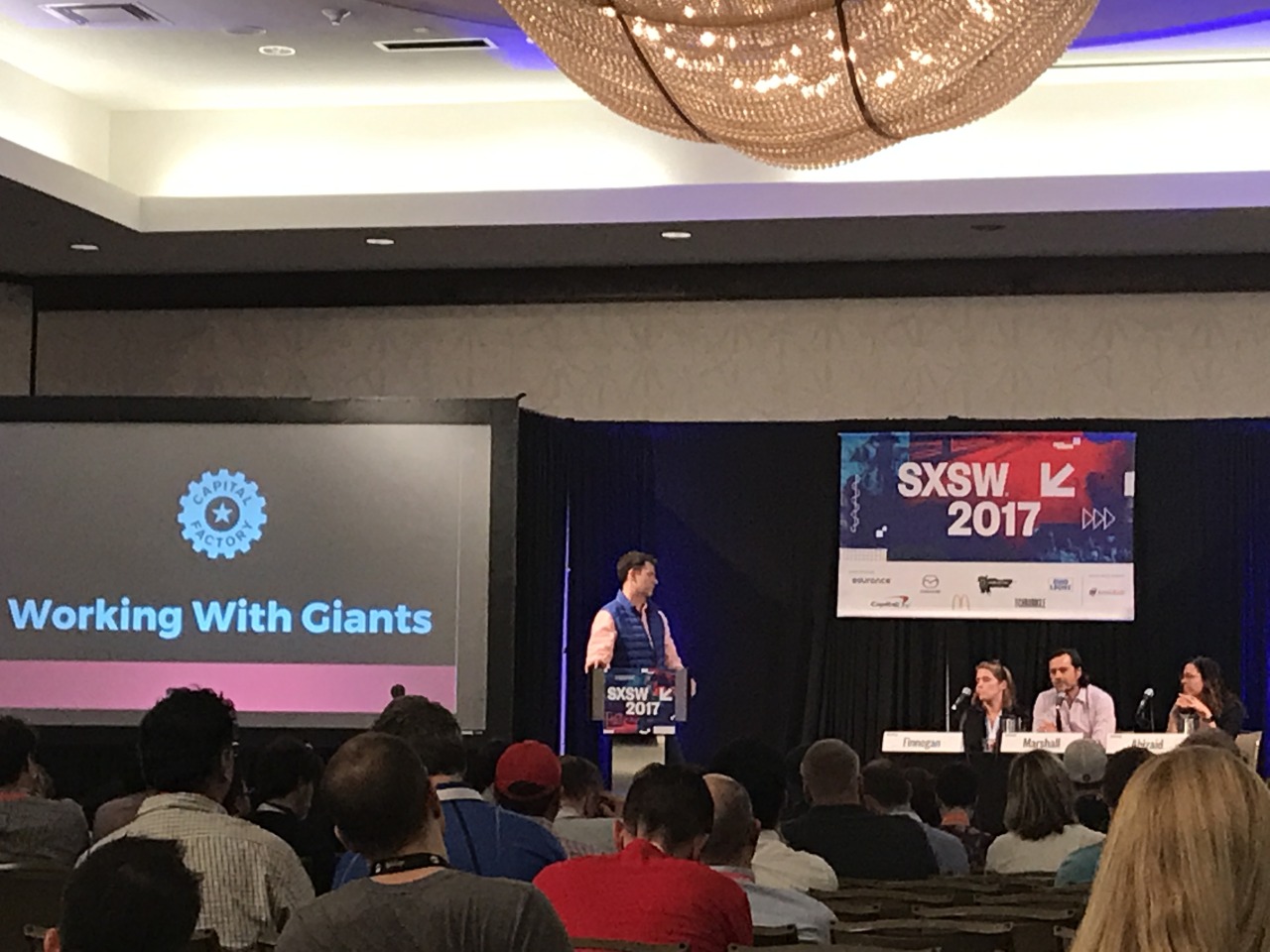
At a time where there is a groundswell of innovation coming from entrepreneurs, large companies are looking to these external partners to find new solutions, and help drive product and marketing innovation.
Startups, who think and operate differently, can bring a new perspective to important problems. They identify opportunities for cultural change. Startups can also bring friction, in a constructive way. And common issues, such as how outsiders deal with large corporate governance or how quickly to expect commercial success were also front and centre of the SXSW “Working with Giants” panel discussion.
Representatives from three of the world’s largest organisations—Walmart, Daimler Benz and the US Department of Defence—took to the stage today at SXSW to share their experiences of working with startups.
Here’s their top three tips:
1. Set clear business challenges when you open up to startups
Define broad challenges to enable startup partners to flex their capabilities. Katie Finnegan, President of Incubation at Walmart defined challenges to open up to partners such as “how can technology reduce shoplifting?”, or “how do we make the in-store experience better?”, which do not specify technology solutions and so enable partners to bring new ideas.
2. Identify a senior internal champion to drive the collaboration
Sam Marshall, CFO Moovel (a Daimler Benz company) observed that “Initially, it often takes a visionary to realise you need to look outside [a large] organisation for solutions”. Like any change in a big company, a senior champion will give momentum to support new partners and ways of working.
3. Beanbags matter!
For large companies, it’s not just collaboration with startups that brings about product evolution; it’s the new ways of working that go alongside that. Hack-a-thons, break-out sessions, multi-functional teams are all elements that might be uncomfortable at first, but, as Sam Marshall observed, once people get used to a new approach, they enjoy the beanbags and dressing differently and come to work with a different attitude.
The panel also shared some cautionary tales. Here are two things to watch out for:
1. What you measure, matters
Pay attention to the measures of success for startup partnerships. If you’re engaged on a longer-term project, commercial success is unlikely to be a helpful or achievable KPI. Rather look to areas such as delivering at speed or broader cultural change metrics.
2. Understand core competencies
Listen carefully to how startups define their core product and competencies. The temptation may be for them to pivot their work to address your problem. When startups start to shift their focus to mould to what the “giants” want to do, there’s a risk that the passion, energy and core competency that they started with starts to dissipate.
What does the future look like when the internet of Things knows how you 'feel'
Hansa Wongsiripitack
The technology we use in daily life today knows much about the who, what, where, why and how of everything we do through different kinds of online tracking methods, but hasn’t actually known much about how we feel. But that is changing.
With emotion-sensing technology, IoT devices can track human responses through the signals of five major human emotions, joy, sadness, fear, anger and disgust (a set that will sound familiar to fans of the Pixar film Inside Out). This enhances the capability of IoT devices to not only communicate with us but also understand, build emotional connections and even be able to pick up on social cues to produce a better response.
Pamela Pavliscak, the founder and CEO of Change Sciences and a faculty meber at The Pratt Institute, took a SXSW audience through the next wave of emotion-aware technology with examples that provided creatives and designers huge opportunities to create rich and emotional experiences.
The abilities and examples included:
- Natural language [IBM Watson]
- Vocal intonation [live mood analysis during US presidential election debates between Hilary Clinton and Donald Trump]
- Facial expression [face-recognition payment by Visa, plus a biofeedback game]
- Physical signals [pplkpr app, Pepper robot]

Pavliscak also gave three tips on how companies employing such tools should handle emotions during the design process:
- Avoid trivializing emotion
- Emotion is content, not destination
- Emotion is more 'we' than 'me'.
Understanding human feeling is a major innovation in the modern design process. We’re going to see more examples of AI-led products and technologies that are able to strengthen connections and drive participation with their target community.




.jpg&h=334&w=500&q=100&v=20250320&c=1)
.jpg&h=334&w=500&q=100&v=20250320&c=1)
.jpg&h=334&w=500&q=100&v=20250320&c=1)
.jpg&h=334&w=500&q=100&v=20250320&c=1)
.jpg&h=334&w=500&q=100&v=20250320&c=1)



.jpg&h=268&w=401&q=100&v=20250320&c=1)
.jpg&h=268&w=401&q=100&v=20250320&c=1)
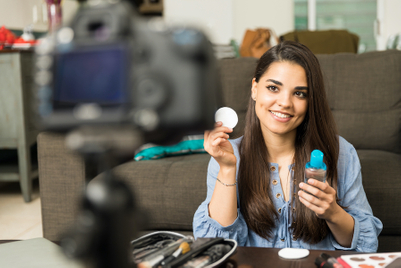
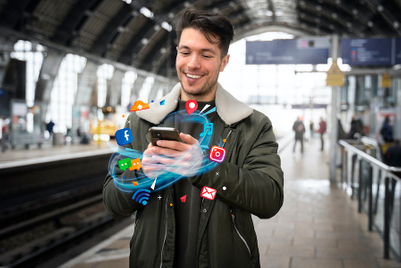
.jpg&h=268&w=401&q=100&v=20250320&c=1)
.png&h=268&w=401&q=100&v=20250320&c=1)
.jpg&h=268&w=401&q=100&v=20250320&c=1)
